Tropical Storm Florence has dumped "epic" amounts of rain on North and South Carolina as it trudged inland, triggering dangerous flooding, knocking out power in nearly 900,000 homes and businesses, and causing at least eight deaths.
Florence's intensity has diminished since it roared ashore along the US mid-Atlantic coast on Friday as a hurricane.
But the storm's slow march over the two states, crawling west at only 3km/h, threatens to leave large parts of the region deluged in the coming days.
"This system is unloading epic amounts of rainfall, in some places measured in feet and not inches," North Carolina Governor Roy Cooper told a news briefing.
The state has already endured record rainfall totals, with much more expected to come from the storm that forecasters said was 480km wide.
"This is a hurricane event followed by a flood event," said South Carolina Governor Henry McMaster.
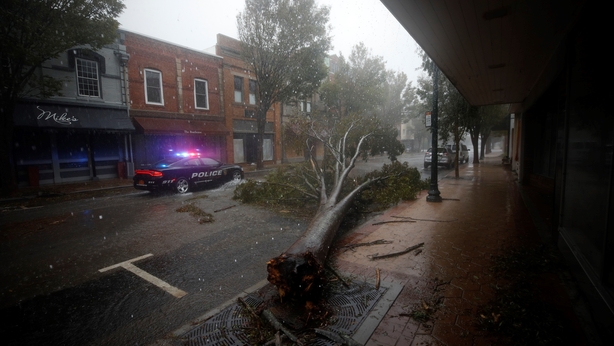
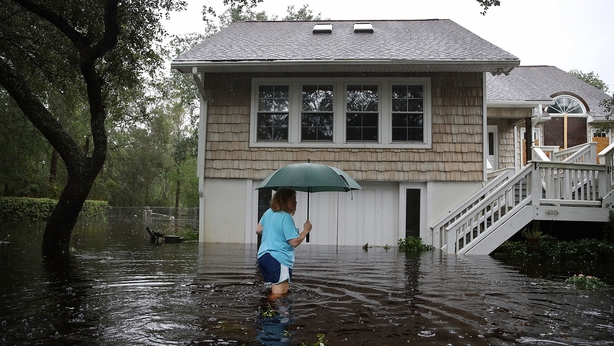
With flood waters rising rapidly in many communities, stranded people were being rescued by boat and by helicopter, while tens of thousands of others hunkered down in shelters.
Numerous roads were closed, and authorities warned of potential landslides, as well as the possibility of flood waters imperiling dams and bridges as rivers and creeks swelled.
Utility crews worked to restore electricity even as floodwaters inundated whole communities.
As of this afternoon, about 752,000 people remained without power in North Carolina, along with 119,000 in South Carolina.
In Wilmington, a city of about 120,000 on North Carolina's Atlantic coastline, along the Cape Fear River that is home to historic mansions, streets were strewn with downed tree limbs and carpeted with leaves and other debris.
Electricity remained out for much of the city, with power lines lying across many roads like.
At 2pm local time the National Hurricane Center said Florence had maximum sustained winds near 75km/h and continued to produce catastrophic flooding in the Carolinas.
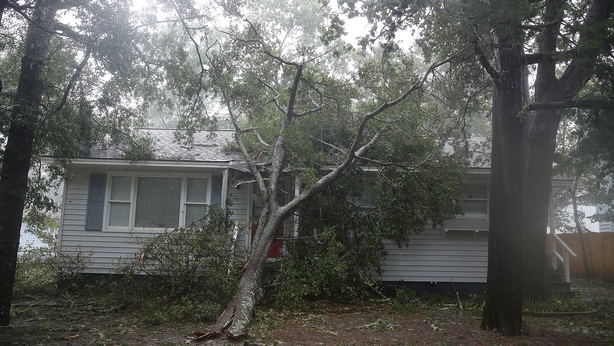
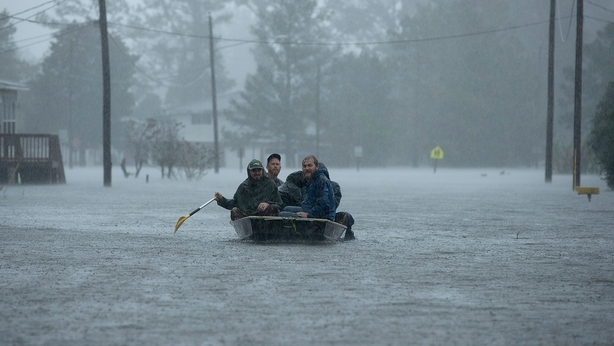
It said it was located about 65km west of Myrtle Beach, South Carolina, and forecasters predicted a slow westward march.
The NHC said the storm would dump as much as 30 to 40 inches of rain on the southeastern coast of North Carolina and part of northeastern South Carolina, as well as up to 10 inches in southwestern Virginia.
Fayetteville, a city of about 210,000 people about 145km inland, issued a mandatory evacuation order for thousands of residents near Cape Fear River because of flooding.
Fort Bragg, a sprawling US Army base, is just west of Fayetteville.
Governor Cooper advised North Carolina residents inland that rivers will rise days after the rain has stopped.
We need your consent to load this rte-player contentWe use rte-player to manage extra content that can set cookies on your device and collect data about your activity. Please review their details and accept them to load the content.Manage Preferences
Officials said there had been at least seven storm-related fatalities in the state.
Authorities in South Carolina reported one death, saying a woman was killed when her vehicle struck a fallen tree.
Florence has already set a North Carolina record for rainfall totals, exceeding that of Hurricane Floyd, which struck in 1999 and caused 56 deaths.
Floyd produced 24 inches of rain in some parts of North Carolina while Florence already yhas dumped about 30 inches in areas around Swansboro.
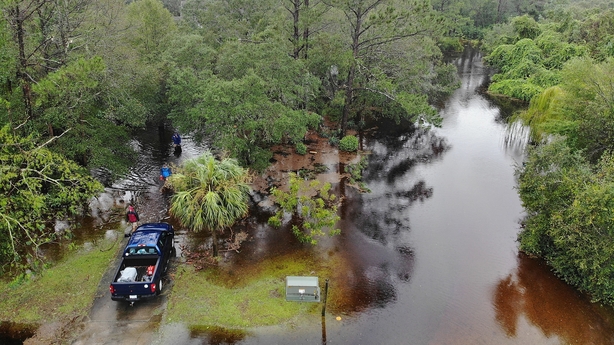
On Thursday, Florence was a Category 3 hurricane on the five-step Saffir-Simpson scale with 193km/h winds.
It was downgraded to Category 1 before coming ashore on Friday near Wilmington.
In New Bern, at the confluence of the Neuse and Trent rivers in North Carolina, Florence overwhelmed the town of 30,000, with the downtown area under water.
Some area residents described a harrowing retreat as the storm hit.
More than 20,000 people were in 157 shelters in North Carolina, with nearly 6,000 in South Carolina shelters, officials said.
South Carolina authorities said law enforcement officers were guarding against looting in evacuated areas.
The White House said President Donald Trump approved making federal funding available in some affected counties.
Mr Trump plans a visit to the region next week.

